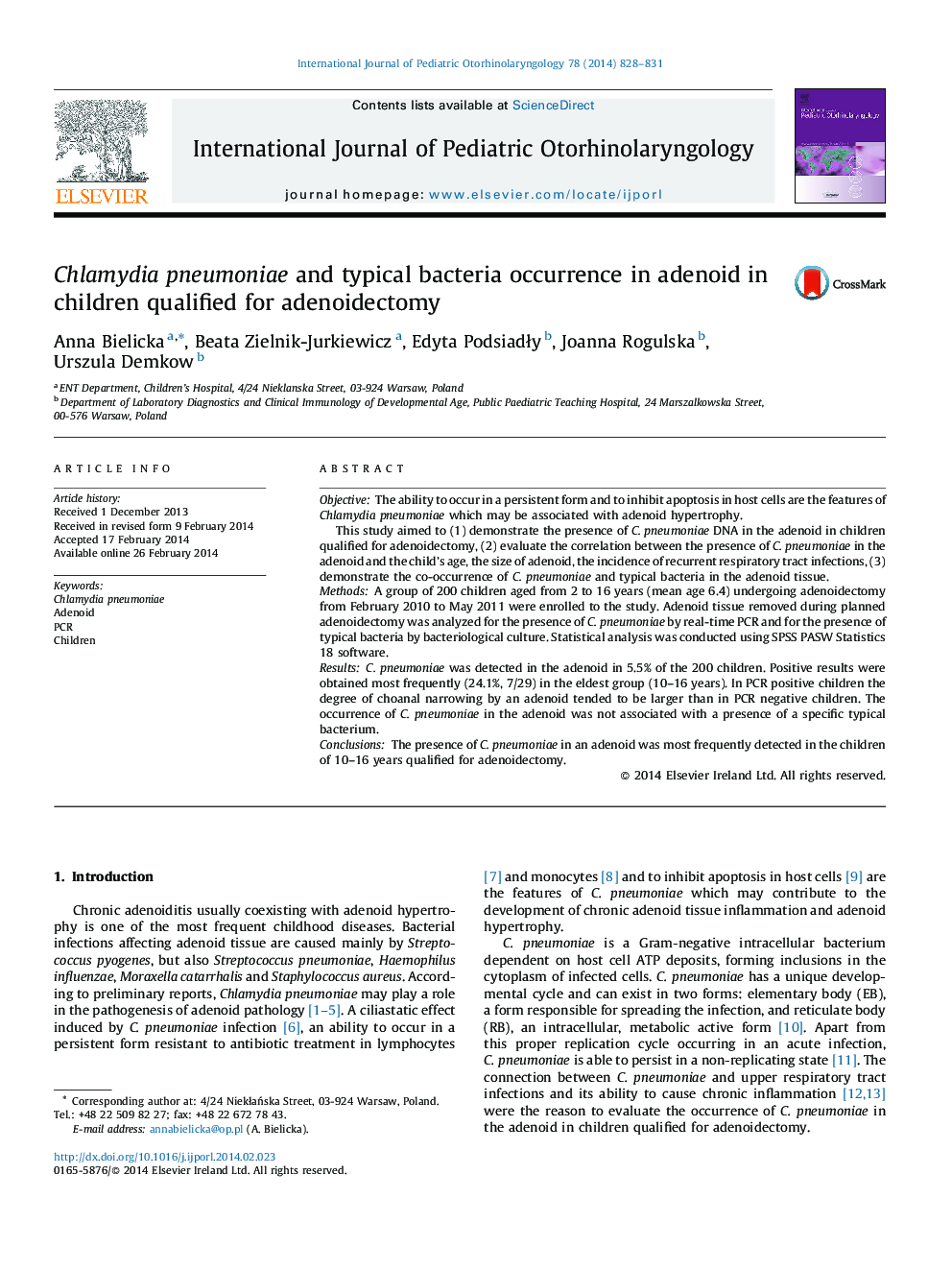| Article ID | Journal | Published Year | Pages | File Type |
|---|---|---|---|---|
| 4112009 | International Journal of Pediatric Otorhinolaryngology | 2014 | 4 Pages |
ObjectiveThe ability to occur in a persistent form and to inhibit apoptosis in host cells are the features of Chlamydia pneumoniae which may be associated with adenoid hypertrophy.This study aimed to (1) demonstrate the presence of C. pneumoniae DNA in the adenoid in children qualified for adenoidectomy, (2) evaluate the correlation between the presence of C. pneumoniae in the adenoid and the child's age, the size of adenoid, the incidence of recurrent respiratory tract infections, (3) demonstrate the co-occurrence of C. pneumoniae and typical bacteria in the adenoid tissue.MethodsA group of 200 children aged from 2 to 16 years (mean age 6.4) undergoing adenoidectomy from February 2010 to May 2011 were enrolled to the study. Adenoid tissue removed during planned adenoidectomy was analyzed for the presence of C. pneumoniae by real-time PCR and for the presence of typical bacteria by bacteriological culture. Statistical analysis was conducted using SPSS PASW Statistics 18 software.ResultsC. pneumoniae was detected in the adenoid in 5.5% of the 200 children. Positive results were obtained most frequently (24.1%, 7/29) in the eldest group (10–16 years). In PCR positive children the degree of choanal narrowing by an adenoid tended to be larger than in PCR negative children. The occurrence of C. pneumoniae in the adenoid was not associated with a presence of a specific typical bacterium.ConclusionsThe presence of C. pneumoniae in an adenoid was most frequently detected in the children of 10–16 years qualified for adenoidectomy.
